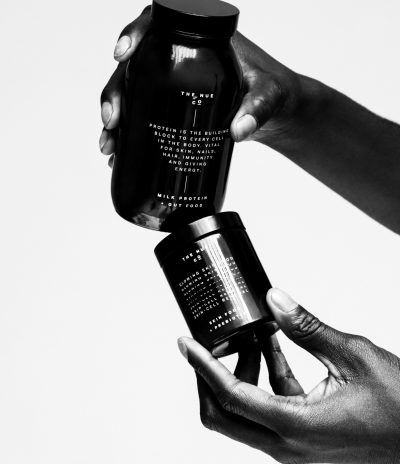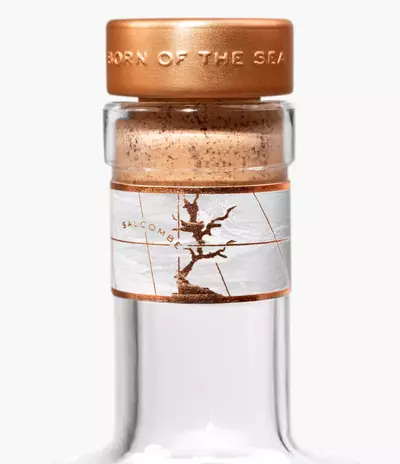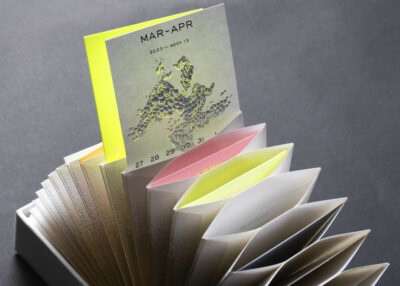TO HAVE AND TO HOLD
Thoughts from our co-founder Paul on the importance of craft | May 25 2023

Thoughts from our co-founder Paul on the importance of craft | May 25 2023
Made Thought began, in 2000, at a crossroads of the digital and the physical. We had survived the phantom threat of the Millennium Bug and were still innocent of Wikipedia and the iPod, whose imminent launches would shape the digital futures of information and culture. The path ahead was not lit brightly. As at every moment of technological development since the industrial revolution, fear, uncertainty and scepticism accompanied a new digital age but, as ever, success lay not just in embracing change but being part of it. Progress relied on navigating what could be left behind and what was worth keeping.
In 2023, similar anxieties abound, with artificial intelligence the main perceived threat to human autonomy. It is a good time to remember that traversing those earlier periods of change was not about walking aimlessly forward but appraising elements that tie to the past, and have been kept not just out of mere sentimentality.
In a renewed moment of technological flux we return to the notion of craft and its value. The very origin of the word is as elliptical as its contemporary understanding is broad, though most routes align with skill. As much a part of ‘Minecraft’ and ‘spacecraft’ as ‘craftsmanship’ and ‘handcrafted’, it is a word that speaks not only to how things are made but how things travel, and always with an implication of the involvement of a human hand.
That skill cannot be separated from craft is pertinent. In an impatient age, we still value the time taken for training, for formal or informal education. Thinking back to my own study, I remember my own frustration at taking at least a year and a half before we touched colour, let alone type. One of the products of patience is highly skilled craftspeople, of which Made Thought is proud to be populated with. The range of skills is constantly expanding as digital designers, animators and video editors happily sit alongside practitioners of more ‘traditional’ crafts like illustration and graphic design (skills that themselves required space to be made in a studio once upon a time). Witnessing the products of this orchestra is relentlessly inspiring.
At Made Thought, some of our most intelligent, satisfying and successful projects have found a way to navigate the place of craft in contemporary design, engaging digital as a partner, not an adversary. Many of these collaborations have engaged companies where craft is central to their heritage. Developing these relationships has resulted in a new term to the lexicon we use in developing brands: ‘feel’ is just as important as ‘purpose’ and ‘storytelling’. How will a product feel? And how will a consumer feel by experiencing it?
There’s something powerful about starting a relationship with a client right from a blank sheet of paper and challenging what can be done physically. Indeed, collaborating with clients whose paper is their medium, that most symbolic of blue-sky materials for designers, has refocused our own practice.
G.F Smith, in business for 135 years and still operating after emails delivered to inboxes have replaced letters slid through a letterbox, have proved the necessity of craft and tactility to products at the other end of the luxury scale. That is why these important crafts still resonate today, and the fewer that exist, the more they resonate. It feels like these high-end print houses are still very busy–in fact, they’re increasingly busy, but with far more special things.
G.F Smith’s Colorplan brief was a prime example of partnership between digital technology and the expertise. Charged with finding them a new colour for the Colorplan range required a navigation of ego, and the knowledge that the paper and the product had to be the hero. Graphic designers are very good at showing the world how good they are at graphic design, so for once we thought, is it not much better to ask the world? The project engaged a very human colourist, with a nuanced understanding of hue and saturation to steer an algorithm that could ask the public ‘what’s your favourite colour?’ without returning a median result of beige. The success of the project is a cornerstone of our decade-long collaboration with the brand.
Inevitably, there will be a time when AI will be imbued with an even broader set of complex human qualities, including a balance of ego and humility to match a master of Gestalt and the golden ratio, but whether it can outpace a contemporary audience intelligent enough to spot the real from the artificial is a different matter.
Matter itself is at the heart of any conversation about craft, and materiality today is impossible to separate from sustainability. As words also matter, whilst there are many hazards of condensing a giant issue to a single word, perhaps a more useful one to help us approach that issue is ‘responsibility’. What we make can and must be beautifully crafted and responsibly created in equal measure, and there are many happy byproducts of that consideration of process, of what something is made from and how. To slow down and savour the craft of an object makes it much more likely to be savoured by it’s end-user. After all, you can attract people to your brand digitally and you can compel them to purchase but judgement is ultimately made when they have it in their hands.

Salcombe

Stella McCartney

Imprimerie Du Marais